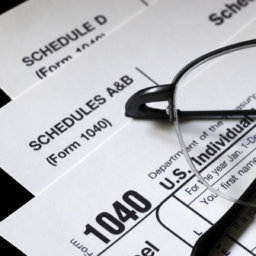
 Property taxes are an essential part of homeownership, but understanding how they are calculated can feel like unraveling a complex puzzle. However, by unlocking the secrets of property tax calculation, homeowners can gain valuable insights into their tax obligations and make more informed financial decisions. In this article, we will demystify the property tax calculation process, providing homeowners with a comprehensive understanding of the factors involved.
Property taxes are an essential part of homeownership, but understanding how they are calculated can feel like unraveling a complex puzzle. However, by unlocking the secrets of property tax calculation, homeowners can gain valuable insights into their tax obligations and make more informed financial decisions. In this article, we will demystify the property tax calculation process, providing homeowners with a comprehensive understanding of the factors involved.
The first piece of the property tax puzzle is the assessed value of your home. Assessed value refers to the value assigned to your property by the local taxing authority for tax purposes. It is typically determined by professional assessors who consider various factors such as property size, location, improvements, and recent sales of comparable properties. Understanding how assessed value is determined is crucial, as it forms the foundation for calculating your property tax.
Individual states will adjust and publish the assessed value for the upcoming year. This is usually done in advance of the tax rates being set by the different tax authorities. The property owner will be notified of the valuation and may challenge it. Reasons that could affect the valuation include material mistakes like square footage or others, the deteriorated condition of the property, comparable sales not known to the assessor, and other possible things.
In the assessment notification, there will be timelines for challenging, as well as specific information on the different remedies that may be available.
Once your home’s assessed value is established, the next step is to determine the tax rate which is set by local taxing authorities, which can be multiple ones like city, county, school, hospital, and other special districts. The rate is expressed as a percentage of the assessed value. Tax rates can vary from one jurisdiction to another, and they are often determined based on the needs of the local government to fund public services and infrastructure projects.
The tax rate usually varies annually and even if the property valuation goes up, it doesn’t mean that the property taxes for that year will necessarily be higher.
Many jurisdictions offer property tax exemptions and deductions that can help reduce your tax liability. Common examples include homestead exemptions, which provide tax relief to homeowners who use the property as their primary residence, and exemptions for senior citizens, veterans, or individuals with disabilities. These exemptions can significantly reduce the amount of property tax you owe. It’s crucial to research and understand the available exemptions in your area to maximize your tax savings.
There may be deadlines for qualifying for a particular exemption for a particular tax year.
Now that we have the assessed value and tax rate, let’s put the pieces together and calculate your property tax. Multiply your home’s assessed value by the tax rate (expressed as a decimal) to determine the preliminary tax amount. For example, if your assessed value is $200,000 and the tax rate is 1.5%, your preliminary tax would be $3,000. Remember to consider any exemptions or deductions you are eligible for, as they will directly impact your final tax amount.
Property taxes are not static, and they can change over time. Factors such as reassessments, improvements, changes in tax rates, or modifications to exemptions can influence your future tax bills. Staying informed about potential changes and planning can help you anticipate and manage fluctuations in your property tax obligations. Keep an eye on local tax policies, attend public hearings, and consult with local tax authorities or professionals to stay ahead of any potential changes that may impact your finances.
Understanding the secrets of property tax calculation empowers homeowners to make informed decisions and better manage their finances. By following this guide, you can gain clarity on the factors involved in property tax calculation, such as assessed value, tax rates, and exemptions.
Let me the resource to help you understand the process and provide comparable sales data and other recommendations. Contact me anytime!









